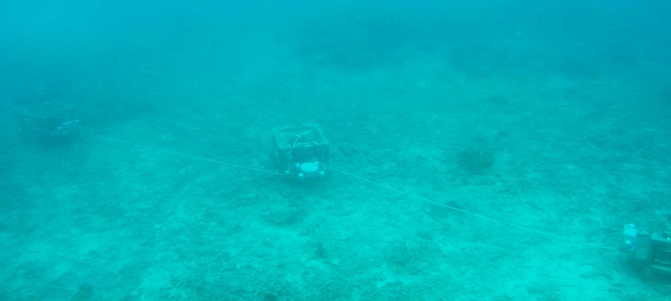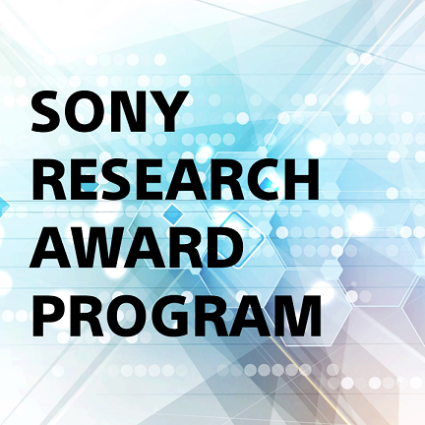The research team of the Exploratory Deployment Group of Sony Group Corporation is working to develop a new underwater wireless communication system that uses electromagnetic waves. Leveraging the difference in characteristics from the existing acoustic wave and optical communication methods, this technology has the potential of application to the environmental sensing in shallow waters, the observation of coastal facilities, and other applications prone to be influenced by suspended solids, seaweeds, sea surface and seabed, etc.
This article presents the results of the joint research project that the team carried out with the Japan Agency for Marine-Earth Science and Technology (JAMSTEC) from FY2021 to FY2023.
Background:
With the global warming changing the environment, there has recently been growing interest in technologies that enable the real-time monitoring of the submarine environment in such areas as blue carbon preservation, which plays a role in the improvement of productivity of the fishing industry as well as in CO2 absorption and fixing. Enabling this type of monitoring requires a communication system that can transmit underwater sensing data to the ground in a stable, efficient manner, in addition to a sensing technology for fixed-point observations of the relevant data including water temperatures and pH values.
Research overview:
The underwater wireless communication system that Sony and JAMSTEC have jointly studied has two major features.
- Electromagnetic wave communication
In the past, optical and acoustic waves were generally used for underwater wireless communication. However, these are prone to be influenced by sea surface and seabed conditions, suspended solids, and other obstacles, which is problematic particularly with applications in shallow waters. To overcome this problem, we have adopted electromagnetic wave communication, which is less susceptible to the impact of these external environmental factors. - Simultaneous reception of data from multiple underwater points
Observing only a single point in the sea is not enough to enable underwater monitoring. A mechanism is necessary that observes multiple underwater points simultaneously and transmits obtained data to the sea surface. If transmitters and receivers can communicate only on a one-to-one basis, numerous communication devices will need to be put in the sea and on the sea surface. That will likely harm the marine environment and cause other problems such as hindering the navigation of vessels. We have therefore created a system that allows a single receiver to receive data from multiple transmitters simultaneously.
In our research, we have developed a unique transmitter and receiver suitable for this communication system, building on our electromagnetic wave simulation technology as well as on the know-how of wireless communication and antenna design that we have gained from developing mobile terminals including audio equipment.
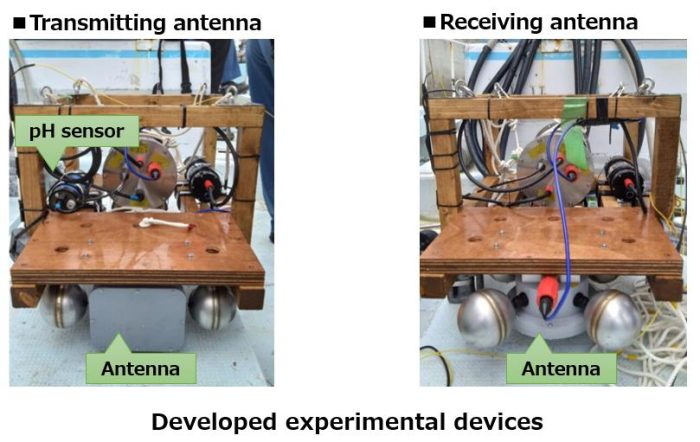
The transmitting and receiving antennas designed for the research have the optimal shapes that we derived on the basis of our original theory. The receiving antenna is designed with our unique technology that makes the antenna equally sensitive to electromagnetic waves from any direction of 360 degrees.
Experiment overview:
In our demonstrative experiment conducted in waters near Ishigaki Island, we succeeded in having a single receiver simultaneously receive data from two transmitters (one with a pH sensor and the other with a CTD sensor) installed on the seabed at a depth of 5 to 10 meters.
The maximum data rate was 50 kbps (distance of 4.5 meters), and the maximum communication distance was 6.5 meters (data rate of 6.25 kbps).
In addition, we were able to transmit the data acquired by the receiver from the sea buoy to the cloud for the real-time monitoring of the sensing data, by utilizing ELTRES™, Sony’s unique low power wireless communication standard.
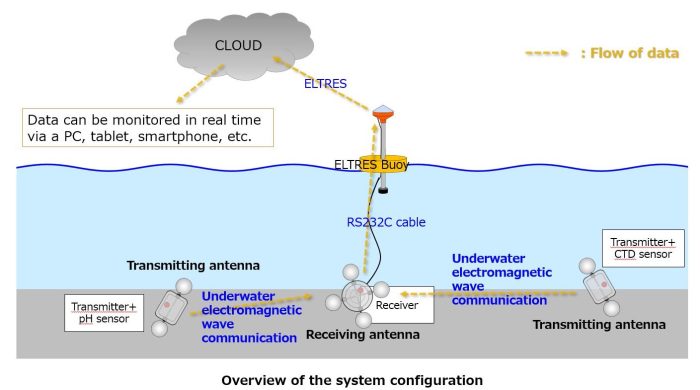
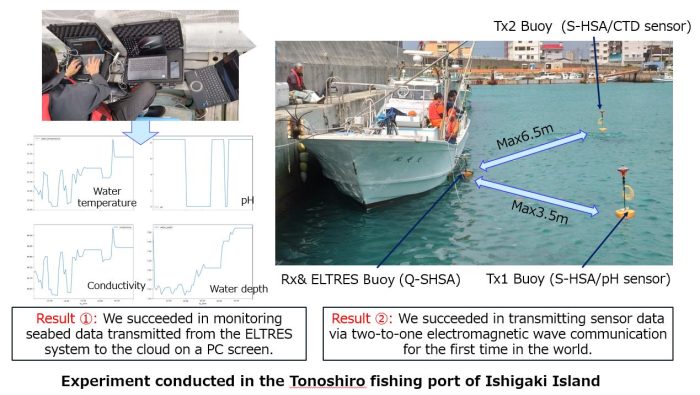
Future prospects:
We are going to develop technologies that enable communication over longer distances. We will also build sensing systems by working with external partners in areas where there is the need for submarine environment data, such as collaborative projects for blue carbon preservation and costal facility inspection.
Related Publications:
- IEEE Antennas and Wireless Propagation Letters
Formulae for the Impedance and Transmission Factor of an Electrically Small Half-Sheath Dipole Antenna Immersed in Seawater | IEEE Journals & Magazine | IEEE Xplore - EuCAP 2023
Design of a Circularly Polarized Underwater Antenna and Its Experimental Verification Using a Water Tank | IEEE Conference Publication | IEEE Xplore - AP-S/URSI 2023
Experimental Observation of Lateral Waves Propagation Along Seabed | IEEE Conference Publication | IEEE Xplore - AP-S/URSI 2023
Field Experiment of a Circularly Polarized Underwater Antenna | IEEE Conference Publication | IEEE Xplore - AP-S/URSI 2023
A High-Efficiency Underwater Dipole Antenna With Spherical Electrodes | IEEE Conference Publication | IEEE Xplore - EuCAP 2024
Conceptual Design and Propagation Characteristics of an Underwater Electromagnetic Communication System for Ocean Environment Sensor Systems | IEEE Conference Publication | IEEE Xplore

